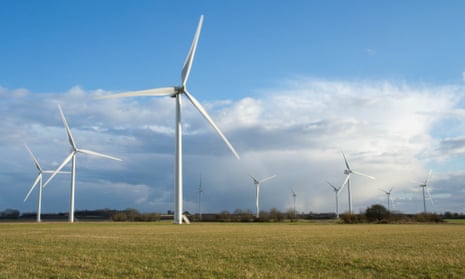The other day, a small child cried “Oh, wow!” when our train drew alongside the wind turbines. Massive, gleaming white, they rose out of flat fields, each one an angel of the south with moving parts.
They are new features in so many old views: they appear as pale windmills from the high ridge, their blades slice through the clouds from my seat at the mill race, and, on still days, they sit beyond our potato fields as a collection of 10 stopped clocks.
This morning, the railway line was at my back as I walked right up to them for the first time.
In hedgeless fields, skylarks shot out from under my feet and sang both low and high.
It was still rush hour and I could see cars glittering on the distant A1 and began to pick up the hum of traffic. And then I realised that the sound was no longer traffic, but the whoosh of the turbines. The nearest one – light grey, not white – gave metronomic whoo-oo sighs.
It had a propeller cone that in sheer size and shape reminded me of a jumbo jet. The twisted blades were remarkably slender, with nothing much to catch the breeze, bent as if a gale had buckled them backwards.
As each arm arced clockwise from 12 o’ clock, it cast a plunging shadow running down the turbine’s trunk. It made me start at first, but then I got accustomed to its regularity.
The closer I went, scrunching over gravel on its foundation, the bigger the turbine seemed to grow.
It was smooth, shiny, beautiful, and terrible too in its animalistic movements. I heard the mechanism between the swishing sounds, a high hissing and churning like many sets of maracas shaking at once.
I couldn’t resist walking up metal steps at its base and placing my palm against the column, as if it was some kind of metal smooth-barked giant redwood.
And then I turned away and hurried back into the fields. The blades still turned, now farther away, and the skylarks still sang. Up and up they went.

Comments (…)
Sign in or create your Guardian account to join the discussion